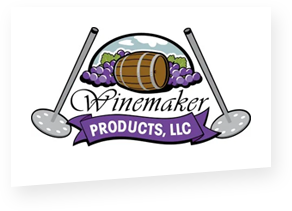Ask the Winemaker
FAQ
Secure the best grapes possible; crush and ferment the grapes; age the wine and bottle the wine.
When grapes are crushed, they produce a mixture of skins, stems, and juice. This mixture is called "Must."
The basic techniques are similar, but the routines differ. The major difference is red wine needs skin-to-juice contact to bring out the color. White wine needs little to no skin contact.
A crusher; fermentation vessel, punch down tool (our Must Plunger); a basket press; glass or stainless steel storage vessel; Brix; 5 to 10 feet of ½" or ¾" food grade tubing; 750 mL dark wine bottles cork and a corker.
A hydrometer is an instrument used to measure the liquid density of grape juice. It is a sealed glass tube with a weighted bulb at one end; it will measure the Specific Gravity (SG) or the Brix of the grape juice one is about to ferment. These readings will give a winemaker the idea of Alcohol by Volume (ABV) one will be able to produce from the batch of crushed grapes ready to be fermented. The ratio is called specific gravity (SG) or the Brix value of the must. The Brix scale of the hydrometer is the preferred scale most experienced winemakers use.
I am sure you realize wine is food, and in the preparation of food, the work area must be kept clean and sanitary. In view of this, here are the "Do's" and "Don'ts" of maintaining a clean and sanitary work area.
Approximately 90 pounds. Usually, a 36-pound case of grapes will yield 2 and ½ gallons of juice. Therefore, 2 cases will do it, but the extra poundage will allow one to have more for topping and by the lost through filtering.
When making red wine, punching down the Must at least twice daily should be performed. In addition, every other day, one should take a Brix reading and record the date and reading. Once the reading has dropped to 5 Brix, begin checking the Brix reading daily. Once the reading falls below zero and better to a minus 5, fermentation has completed, and the must is ready for pressing.
It's advisable to place the pressed wine juice in a container and allow it to rest for 36 to 48 hours. This will allow the gross Lees to fall to the bottom. When ready, siphon/pump the juice into the storage vessel, leaving the gross Lees in the bottom to be disposed of later.
Yes, but the level of sulfites used in wine should be as low as possible, only just enough to have the desired effect to protect the wine. However, I believe that sulfur is necessary in the winemaking process. The SO² is an antioxidant, anti-microbial, and antibacterial and binds with acetaldehyde causing wines to lose flat flavors. All of these are very beneficial to wine and outweigh the risk of having a wine go bad.
Before adding any potassium metabisulfite, it's important to measure the amount of SO² that exists in the wine. Using a SO² meter, one can determine this number. Once you have the amount of free SO², go to the calculator on www.winemakermag.com to determine the correct amount needed to make the wine safe.
The preferred time is 18 months, but if you don't have the equipment to make wine the following year, bottling will have e to occur prior to the next harvest.
Most winemakers prefer to add oak to their wines, and the best method is to age the wine in oak barrels. However, this isn't always possible for a whole bunch of reasons. Therefore, there is an alternative that can take the place of a barrel, and they are called cubs, beans, chips, and staves. Using a container such as the Oak Flavoring Tube, one can load it with American or French Oak cube or bean and lower it into a carboy, demijohn, and even a naked barrel, and within a few months, the oak will have infused its flavor in the wine. Always remember to be conservative when adding the oak alternatives and taste the wine frequently.
Firstly, measure the free SO² and make sure you are in the 25 to 30 mg per liter of wine. Then, you'll need approximately 25 to 27 Bordeaux-style bottles for the 5-gallon carboy of red wine. You'll also need the same amount of corks. As you cork each bottle of wine, turn the bottle cork side down and return it to the case or store it in a wine rack, ensuring the cork makes contact with the wine.

